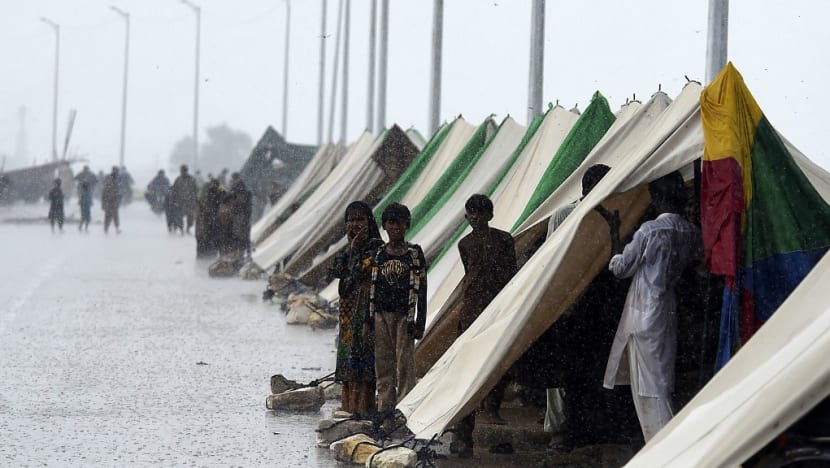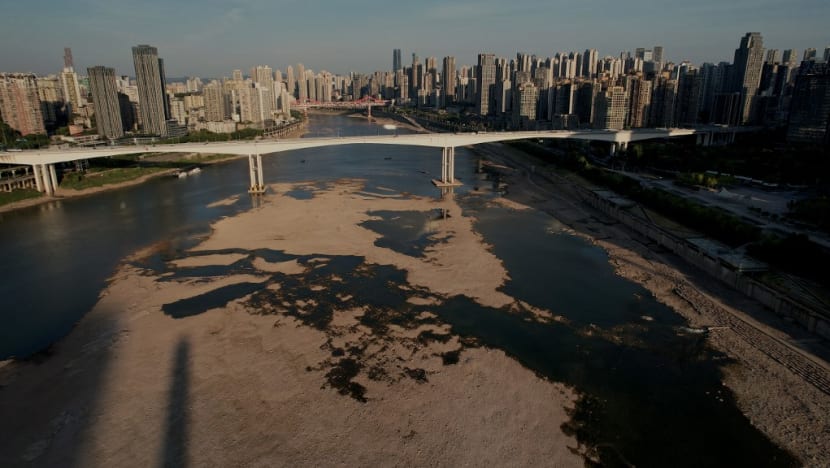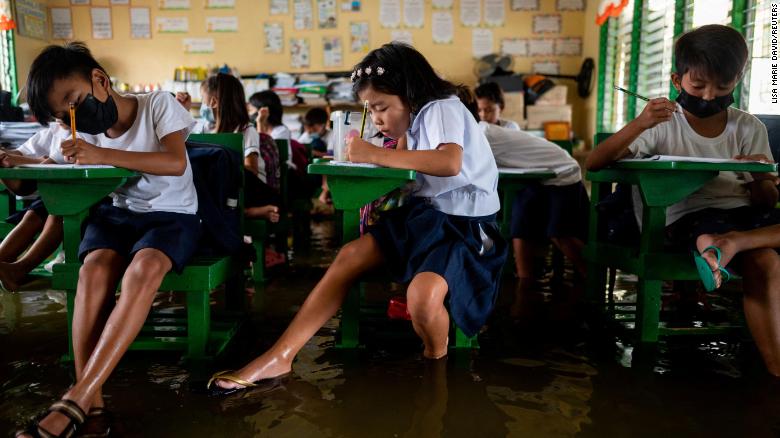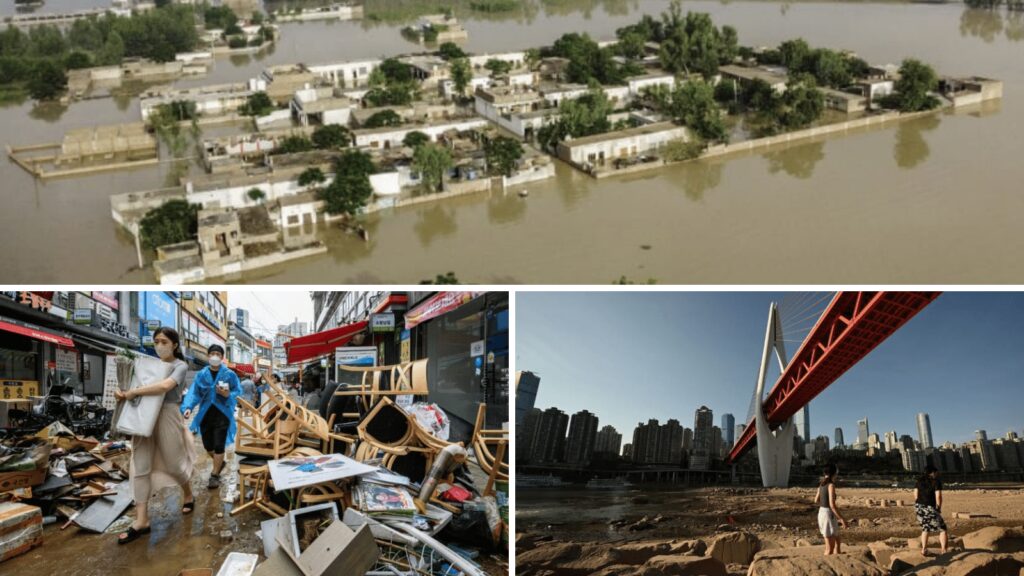High temperatures, frequent droughts, torrential rains, and other extreme weather events this summer have throttled Asia.
Over the past few months, Asian countries have experienced heavy rains and higher temperatures, resulting in unpredictable weather patterns. When the rains aren’t falling a lot—as in Pakistan, where eight monsoon cycles have left thousands of people homeless—they aren’t falling at all, causing energy shortages as droughts. Record-breaking temperatures in China, for example, have sparked intense wildfires in the country’s center and dried up rivers that cities bank on to power industries and homes.
People in coastal regions of Asia, particularly those living in cities, could face some of the worst effects of global warming, climate experts will warn this week. Hundreds of millions of people are likely to lose their homes as flooding, famine and rising sea levels sweep the region, one of the most vulnerable on Earth to the impact of global warming.
RELEVANT SUSTAINABLE GOALS


Extreme Monsoon in Pakistan
More than 33 million people – one in seven Pakistanis – have been affected by the floods, which have destroyed or badly damaged nearly a million homes. “We have monsoons every year … it is nothing like this,” the country’s minister for climate change Sherry Rehman told CNN. “This is a torrential downpour of biblical proportions.”
According to Pakistan’s disaster management agency, since the monsoon rains began in June, about 810,000ha of cultivated crops have been wiped out. More than 3,100km of roads have also been destroyed and at least 149 bridges washed away.

There were more than 2,000 deaths and a fifth of the country was under water during the 2010 floods, the worst on record.
South Korea’s Flooding
Earlier this month, heavy rains battered South Korea, causing widespread flooding and knocking out power in parts of the capital. President Yoon Suk-yeol said it was the most rain the country had seen in at least 115 years. Despite the significant rainfall, Yoon said: “We have reached the point where we can no longer call abnormal weather abnormal.” A total of 12 people have died and several others have gone missing.

Extreme Weather in China
Southern China experienced its longest period of continuous high temperatures in more than 60 years this month, thanks to a heatwave that will go down in history. Heatwave experts have said it could be among the worst recorded in global history because of its intensity, scope, and duration.
Yangtze River basin, extending from coastal Shanghai to Sichuan province, has been most affected by the heat. Near the basin and several manufacturing hubs, including the megacity Chongqing, 370 million people have been affected by the hot spell.

Sichuan and Chongqing have found relief from the heatwave after they were hit with heavy rains on Sunday, which are forecast to continue into Tuesday, requiring the government to institute an emergency flood-prevention plan.
Severe Tropical Storm In The Philippines
A severe tropical storm in the Philippines forced schools to close the day after classes resumed after the nationwide COVID-19 pandemic shutdown and a shift to online learning. Some of the most industrialized metro areas in the Philippines also closed their government buildings Tuesday and Wednesday, according to a statement by Philippine President Ferdinand Marcos Jr.

Authorities preemptively evacuated more than 540 people to shelters and flood warnings were issued for the provinces of Zambales, Tarlac, Bataan and Pampanga.
Photos from Pampanga Monday showed some students spent their first day back at school after more than two years of remote leaning in flooded classrooms as the storm inched closer to land.
Asia’s Extreme Weather: What Do We Know?
For one, in line with global warming trends and the continued rise in greenhouse gas (GHG) emissions, the region has seen its annual mean temperature increase at a rate of 0.14°C to 0.20°C per decade since the 1960s. It is hotter than it used to be and the region can expect further increases in temperature. Asia is also expected to see an increased frequency of heatwaves.
The high humidity of the region will compound the high temperatures and increase the incidence of heat stroke and heat-related deaths. According to one study, heat-related mortality has already gone up by 61% in Thailand, Vietnam and the Philippines since the 1990s.
The increase in temperatures and heat stress in agriculture could reduce labour capacity by up to 50%, as well as agricultural productivity and food production at 3°C warming. According to one study, this will lead to a 5% increase in crop prices from increased labour costs and production loss.
The region will likely suffer from higher rates of malnutrition, especially as other parts of the world are facing difficulties with crop production. In 2016, El-Nio resulted in acute food insecurity for 20.5 million people in South East Asia, Eastern and Southern Africa, and underweight for 5.9 million children in those regions. As CO2 levels in the atmosphere increase, certain crops will also lose nutritional quality and be more likely to have micronutrient deficiencies.
The higher levels of energy and moisture in the atmosphere, produced by global warming, will translate into changing rainfall patterns. Increased annual average rainfall has already been observed in parts of China, Malaysia, Vietnam and southern Philippines.
Are We on The Brink Of Another Humanitarian Crisis ?
Every day that goes by, the evidence mounts up to form an overwhelmingly clear picture: climate change is now the single biggest humanitarian threat facing the world in the future. Development agency Oxfam examined that ten of the world’s worst climate hotspots afflicted by climate catastrophe such as drought, floods, severe storm and other extreme weathers conditions. Their findings shown that the rate of extreme hunger has mire than doubled in the past six years.
We are already seeing its direct effects in our work. Extreme weather events are becoming more frequent, more severe and less predictable. Besides the death and injury that occur in the immediate aftermath of natural disasters, unseasonal droughts and flooding often mean crops fail or water supplies are contaminated, and hunger and disease levels rise.
All of this is why the current decade could see a 50% increase in the number of people needing international aid because of the effects of climate change, and the number could double by 2050 if drastic action is not taken.
You may also be interested in :
Sisters Of The Moon : Poulomi Basu’s Evocative Photo Series On Climate And Gender
The article was initially published on 30th August 2022. Updated on 21st September 2022.



